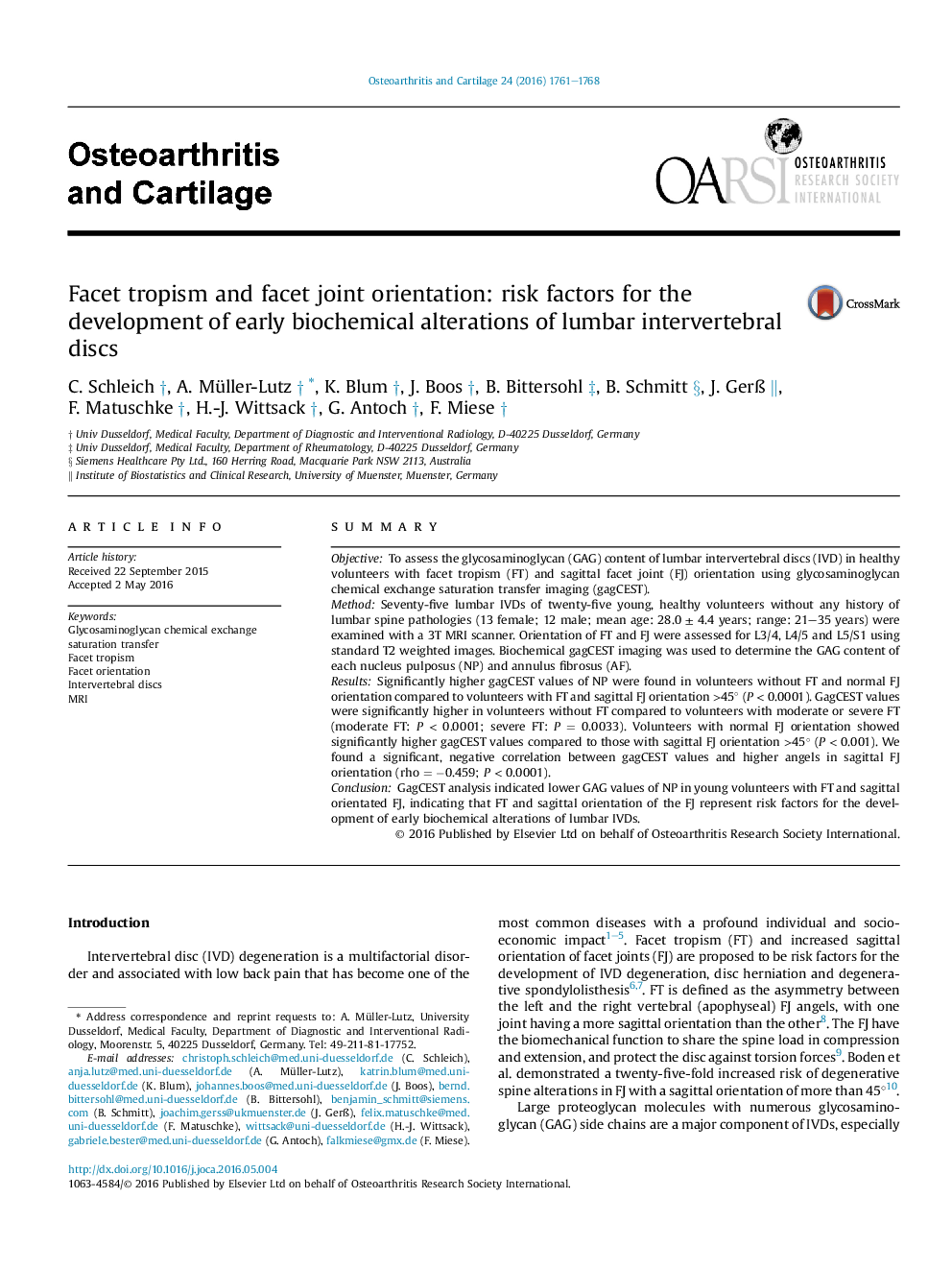| Article ID | Journal | Published Year | Pages | File Type |
|---|---|---|---|---|
| 5669264 | Osteoarthritis and Cartilage | 2016 | 8 Pages |
SummaryObjectiveTo assess the glycosaminoglycan (GAG) content of lumbar intervertebral discs (IVD) in healthy volunteers with facet tropism (FT) and sagittal facet joint (FJ) orientation using glycosaminoglycan chemical exchange saturation transfer imaging (gagCEST).MethodSeventy-five lumbar IVDs of twenty-five young, healthy volunteers without any history of lumbar spine pathologies (13 female; 12 male; mean age: 28.0 ± 4.4 years; range: 21-35 years) were examined with a 3T MRI scanner. Orientation of FT and FJ were assessed for L3/4, L4/5 and L5/S1 using standard T2 weighted images. Biochemical gagCEST imaging was used to determine the GAG content of each nucleus pulposus (NP) and annulus fibrosus (AF).ResultsSignificantly higher gagCEST values of NP were found in volunteers without FT and normal FJ orientation compared to volunteers with FT and sagittal FJ orientation >45° (P < 0.0001). GagCEST values were significantly higher in volunteers without FT compared to volunteers with moderate or severe FT (moderate FT: P < 0.0001; severe FT: P = 0.0033). Volunteers with normal FJ orientation showed significantly higher gagCEST values compared to those with sagittal FJ orientation >45° (P < 0.001). We found a significant, negative correlation between gagCEST values and higher angels in sagittal FJ orientation (rho = â0.459; P < 0.0001).ConclusionGagCEST analysis indicated lower GAG values of NP in young volunteers with FT and sagittal orientated FJ, indicating that FT and sagittal orientation of the FJ represent risk factors for the development of early biochemical alterations of lumbar IVDs.
